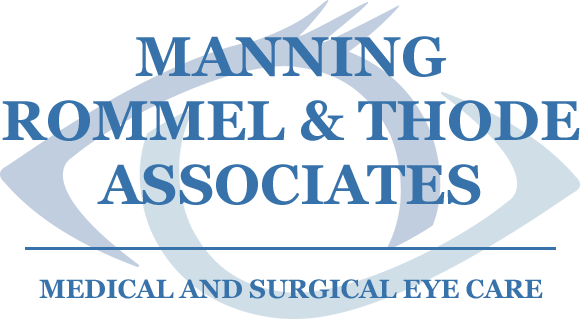We all know exercise is good for our bodies and mental health. Exercising helps us reach weight loss goals, gain or tone muscles, ease symptoms of diseases, relieve stress and cope with anxiety, sleep better, and much more. But did you know exercise can also help us with our eye health?

1. Age-Related Macular Degeneration (AMD)
Age-Related Macular Degeneration is an eye disease that causes vision loss, namely blurred vision or blind spots in your line of vision. There are two different types: dry macular degeneration and wet macular degeneration. When it comes to dry macular degeneration, the center of the retina deteriorates, whereas in wet macular degeneration, blood vessels grow beneath the retina and leak blood and fluid into the eye.
Studies have shown that exercising for a half hour or more at least three times a week can lower your risk of developing wet age-related macular degeneration by 70%. Exercising helps keep our bodies in shape and by exercising frequently, we’re able to keep our bodies “young.” This theory helps to reduce the impact and symptoms of AMD, which are most commonly associated with aging.
2. Glaucoma
Simply put, glaucoma deals with a buildup of pressure inside your eye that damages the optic nerve. If left untreated, this eye disorder can ultimately cause blindness in either one or both eyes. Doctors mainly treat glaucoma by reducing eye pressure.
Moderate-intensity, low-impact exercises can help lead to significant reductions in eye pressure. Studies have shown that those who engage in moderate physical exercise are more than 25% less likely to develop glaucoma than those who live a sedentary lifestyle.
3. Cataracts
Cataracts occur when the proteins in your eye clump together, causing the clear lens of your eye to become cloudier as you get older. They typically develop after the age of 60.
Regularly partaking in cardio, such as running, walking, and cycling for at least 30 minutes a day, can help to reduce the risk of age-related cataracts. Studies have shown that those who do cardio regularly have a 10% lower risk of developing cataracts than those who remain sedentary.
4. Lack of Exercise
Research shows that a lack of exercise increases the risk of developing diabetes. Type 2 diabetes can cause several conditions that affect eye health, such as cataracts, glaucoma, and diabetic retinopathy, which is caused by damage to the blood vessels in retina tissue. Much like glaucoma, it can grow slowly and eventually cause blindness if left untreated.
Regular exercise and a healthy diet can greatly lower the chance of developing diabetes.
5. Eye Exercises
While exercise can greatly impact and help our eye health, there are also eye exercises to consider as well! Eye exercises can’t help decrease symptoms in the conditions previously mentioned, but they can help with eye strain, which can ultimately lead to more serious eye issues. Like the rest of our body, our vision is important and we should exercise it accordingly.
Some eye exercises to consider are:
- 20-20-20 rule
- If you find yourself staring at screens for majority of the day, try to look at something 20 feet away for 20 seconds every 20 minutes
- Figure 8
- While sitting, pick a point on the floor to focus on and try tracing an imaginary figure 8 with your eyes for 30 seconds, then switch directions
- Change your focus
- Take a seat and challenge your focus by moving your finger back and forth slowly three times. Shift your focus from your finger to an object in the distance every time.
Regular exercise not only helps to increase your health, but your overall eye health as well. Add in a good diet and regular eye exams, and you’re good to go! However, there’s no need to look for “optometrists near me” or “eye doctors near me.” Located in Lancaster, PA, Manning, Rommel & Thode Associates has you covered.
To schedule an
appointment or learn more about a vision problem you’re experiencing, contact us today.
